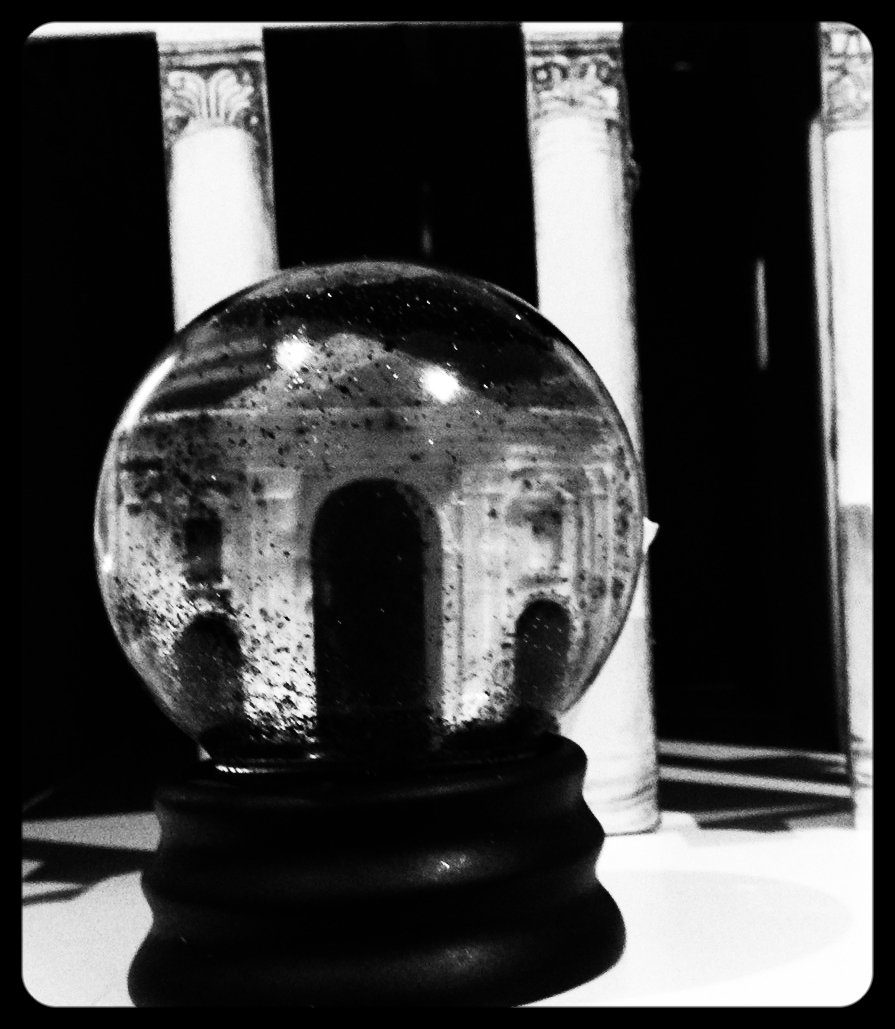
Elegy to Palmyra
This joint project with model maker Fred Phipps was based on the architectural and sculptural ensemble of Palmyra, a world heritage site, which was destroyed by terrorists in August 2015. It is a response to the loss of the legendary city.
The site had architectural distinction on a magnificent scale and the sculptural work had intricate detail. Its beauty was enhanced by its extraordinary setting in the desert. Two eighteenth-century British travellers, James Dawkins and Robert Wood, with the help of the Italian artist Giovanni Battista Borra, recorded what they saw in the book The Ruins of Palmyra (1753). This caused a sensation throughout Europe and America and influenced architects such as Robert Adam and poets such as Shelley.

Triumph Arch Snowglobe
The snow globe has traditionally been mass-produced as a kitsch tourist memento. This representation of the Triumph Arch at Palmyra inverts this convention: it memorialises a great work of architecture destroyed by terrorists. When shaken the monument is surrounded not by snowflakes but by ashes, symbolising wanton destruction.

Model of the Temple of Baalshamin
A cardboard box has been used to represent the small 2nd Century BC temple of Baalshamin whose destruction by Daesh on 24th August 2015 has been described as a war crime by UNESCO.
The model has one classical side to anchor its identity but the other side - with spray painted graffiti and a label marked FRAGILE - suggests vulnerability.
